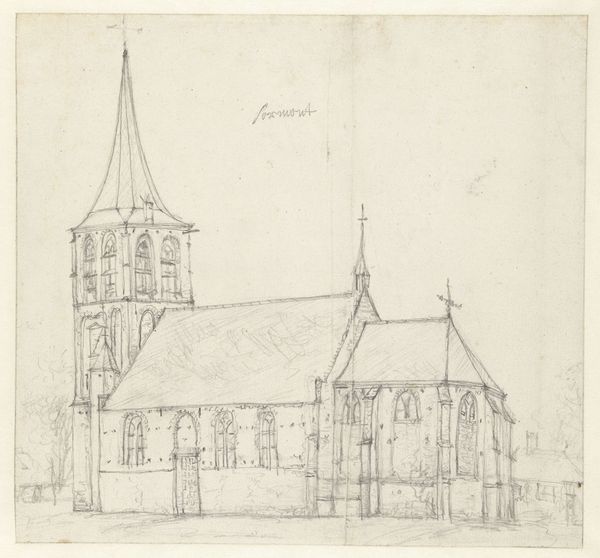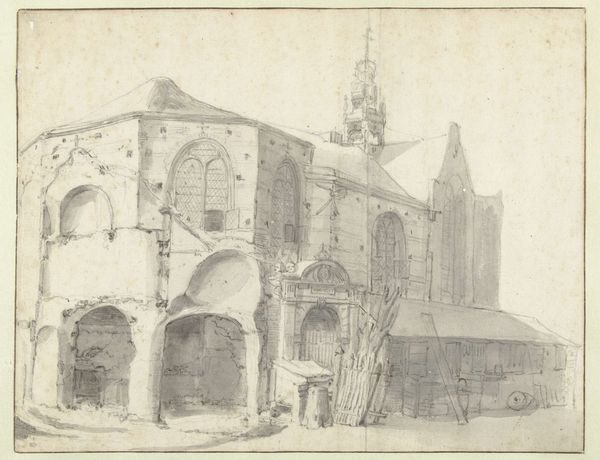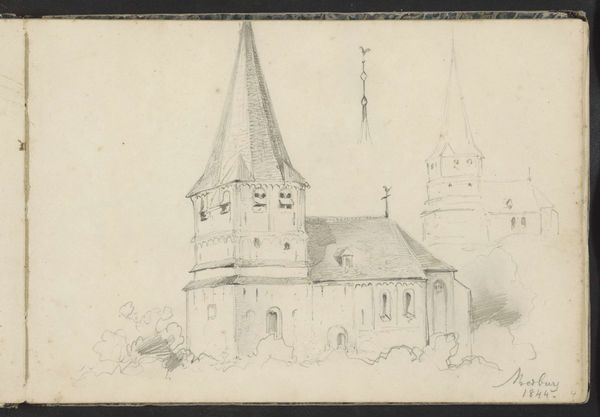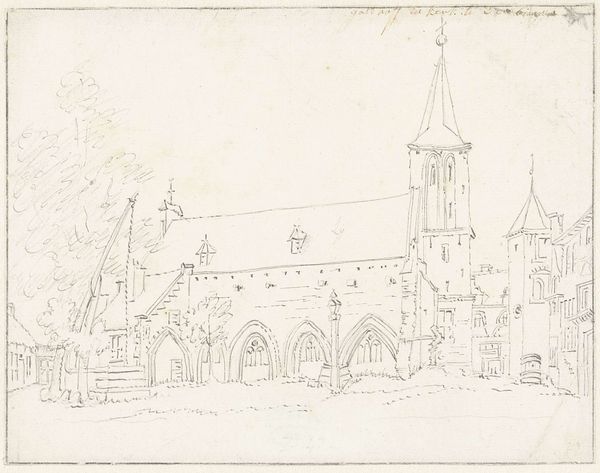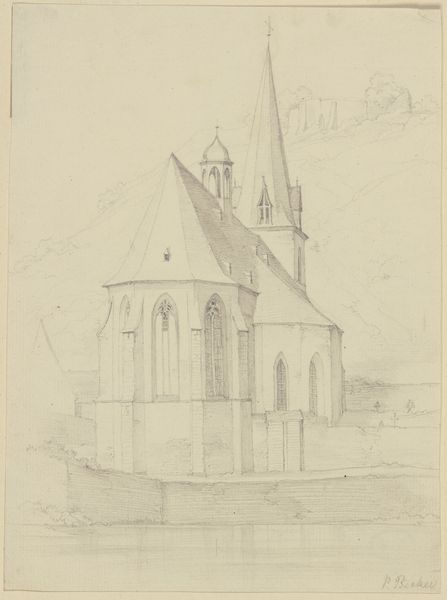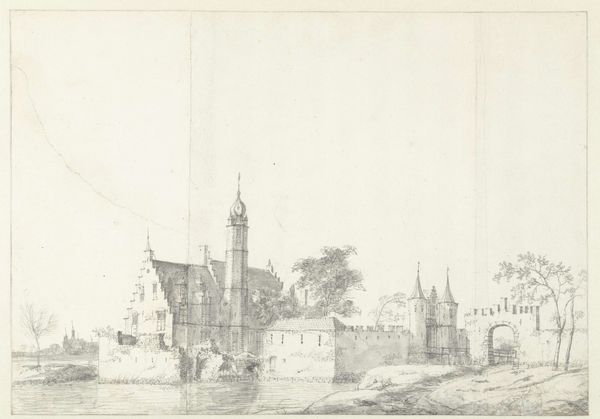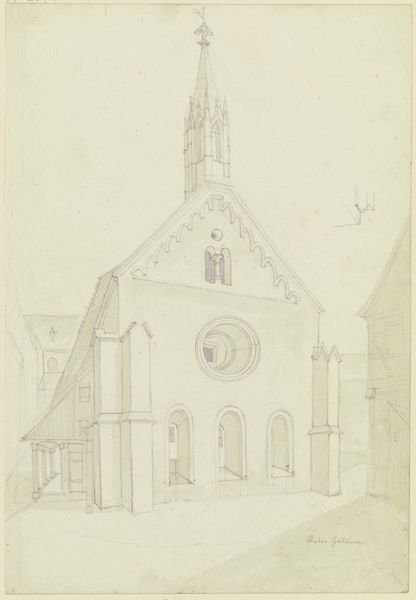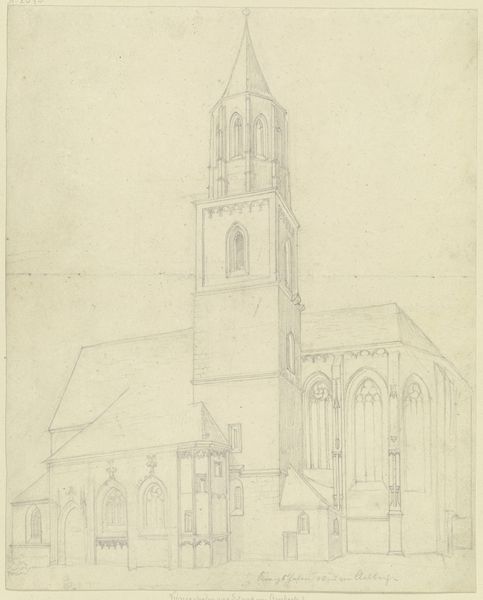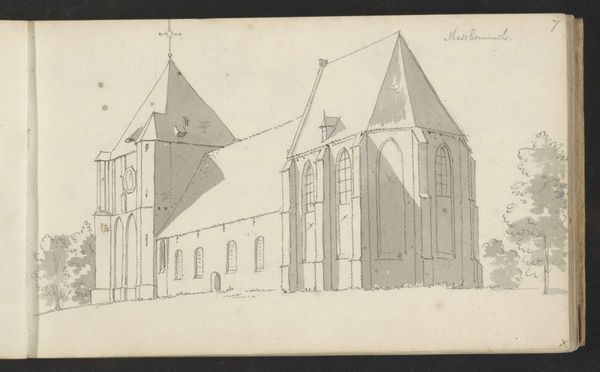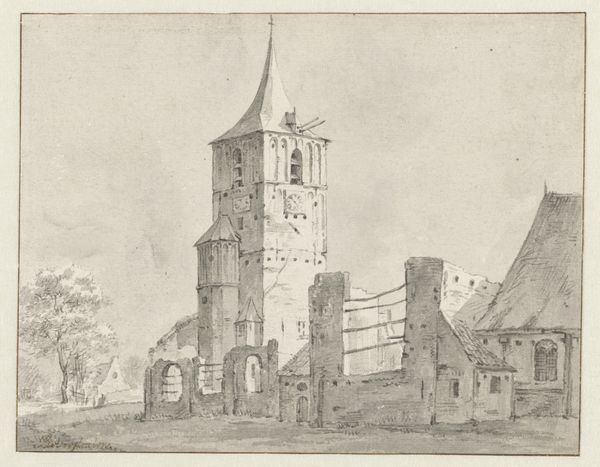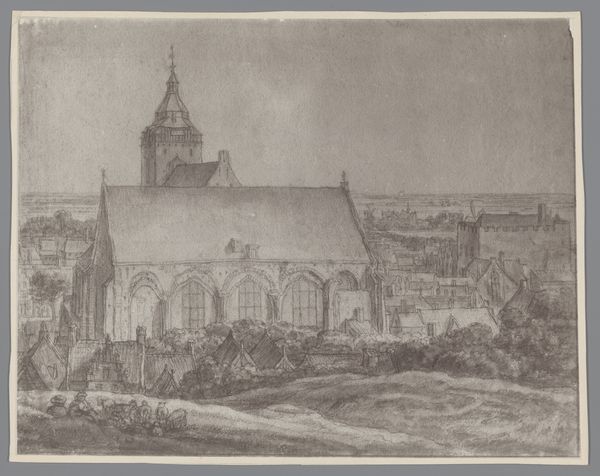
drawing, pencil, architecture
#
drawing
#
amateur sketch
#
aged paper
#
light pencil work
#
quirky sketch
#
baroque
#
pencil sketch
#
incomplete sketchy
#
landscape
#
perspective
#
personal sketchbook
#
pen-ink sketch
#
pencil
#
line
#
sketchbook drawing
#
sketchbook art
#
architecture
#
realism
Dimensions: height 273 mm, width 351 mm
Copyright: Rijks Museum: Open Domain
Curator: This delicate drawing is by Jan Abrahamsz. Beerstraten, dating back to the 17th century. It’s titled "Romaanse kerk, gezien vanuit het noordoosten" or "Roman Church, seen from the Northeast" and is a beautifully rendered architectural sketch in pencil. Editor: There's something immediately haunting about this sketch, isn't there? It feels fragile, almost like a memory fading on aged paper. The detail in the church against that indistinct background pulls me right in. Curator: Exactly! I find it interesting to think about what Beerstraten was trying to capture here. Was it simply a record of the building, or something more? Consider the materials used – humble pencil on paper. These were readily available tools that democratized art-making; who has access to grand landscapes and expensive oil paints versus those who could just quickly document daily architecture or structures, wherever they are and whenever they pass by? Editor: That's a brilliant point about accessibility. There’s a stark difference between something rendered quickly in a readily available medium and a more laboured artwork like an oil on canvas painting! But also look closely – there is a clock tower, though it appears in outline only and perhaps it emphasizes how this particular sacred institution operated as a kind of fulcrum, by which daily life happened! It seems quite unfinished. Perhaps that openness makes space for our interpretation. Curator: I agree. It's less about the finished product and more about the process, that brief moment of seeing and recording. Maybe he simply passed by, had his sketchbook at the ready, and immortalized a building to never look back on. Also I want to return to the idea that in terms of the drawing process – there's no sense of under drawing, then linework, then rendering, all that, it is more as though, by rendering some form of perspectival space (albeit in line drawing only, since light values or hatching doesn't really come into play) the building comes to life almost automatically! And because so many people had easy access to architecture like this it must have represented the daily hum of 17th-century life to a great extent, far beyond high society portraiture and court paintings. Editor: That focus on process really challenges traditional ideas about art, doesn't it? We think of finished paintings as masterpieces, but this humble drawing speaks to the act of creation itself. Curator: It’s lovely to be reminded that beauty can be found in the everyday. It certainly makes one reconsider the grand narratives of Baroque art when it's presented on so-called 'aged' and cheap paper, for instance.
Comments
No comments
Be the first to comment and join the conversation on the ultimate creative platform.

